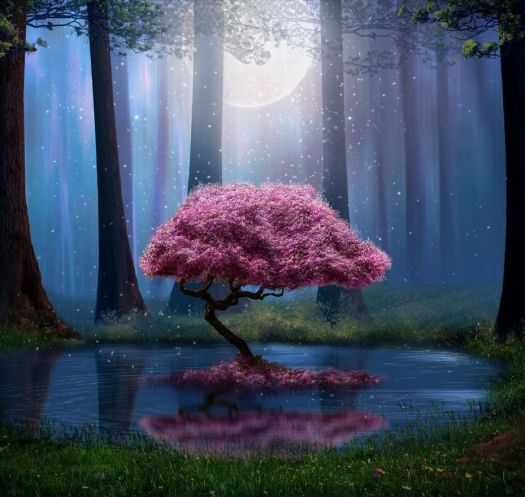Phantasmal Feature (spell)
Phantasmal feature conjures a believable, immovable piece of scenery or construct, corresponding to the dimensions of the spell's area of effect, such as a building, pillar, archway, pond, copse of trees, logs, stone wall and so on.
| Range | 60 ft. +20 per level |
| Duration | 50 rounds per level |
| Area of Effect | 10 ft. diameter cube per level |
| Casting Time | 1 round |
| Saving Throw | negates; see text |
| Level | illusionist (1st) |
The physical components of the object must be stable and unmoving. For example, the spell couldn't depict a waterfall, a tumbling rock or a swinging rope bridge. At best, the surface of a pond might undulate very slightly — yet in a gentle breeze it will be plain the water is behaving contrary to the wind, and is therefore implausible. Solid constructions are much less likely to be detected as an illusion.
Once the spell is cast, the shape of the feature cannot be changed or altered, except that it can be dispelled at will by the caster.
Contents
Saving Throws
Implausible objects, such as those created in a place where the feature is known not to exist, or if the feature's creation is observed, enables a saving throw vs. magic for all witnesses. Those who save thereafter continue to perceive the feature's presence, but will recognize it as a ghostly object that can be seen through and ignored. Creatures with an intelligence of 10 or more receive a +4 saving throw against the illusion.
Those who don't save will treat the feature as completely real, adapting mentally as though the illusion has always existed. Persons will be unable to see through the feature; so, for example, it might be possible for the caster and others to hide inside an illusionary house.
Interaction
Believers, those who have failed save, may interact with the feature, believing themselves to be swimming, climbing, sitting upon or leaning against — with much of this taking place in their minds. Something simple, like a pillar of rock, would serve as an obstacle that they would go around, rather than trying to climb over it ... such as they might a wall. Certain features, however, create their own problems.
Caves
If the caster were to create the appearance of a cave in real solid rock, the believer would imagine themselves entering it, though in reality they would only press themselves against the exterior solid rock. If the caster created the cave and a whole illusionary feature around it, believers could enter and potentially wander around inside, although the dimensions would be surely limited by the spell's area of affect.
Bridges
If made to appear over a real drop, believers might be induced to step on the bridge and fall ... and even believe, as they were falling, that they were still crossing the bridge. However, upon hitting solid ground, should they survive, the illusion is broken.
Additionally, if others are present, they'll see the believer fall off the bridge, and be awarded a saving throw against the illusion immediately. Those who save will attempt to restrain their fellows from stepping onto the bridge — though an illusion like this, carefully placed, might lure several victims to their deaths.
